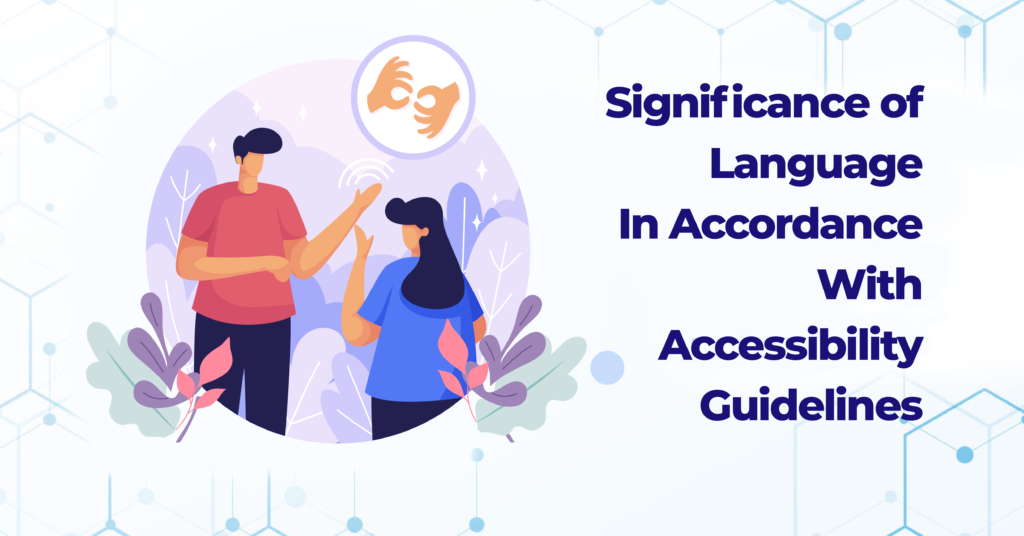The internet is closely related to free speech. Since the evolution of the internet, there has been exponential growth in the creation of new data. A morning blog post by an expert dietician to a weekend podcast are just a few examples of how new data is produced every moment around us. This all has been possible due to the rapid adoption of the internet, which has grown since. The internet makes content easy to access from any corner of the world, making it an excellent choice for data communication.
While the world is marching towards producing as well as consuming data, the aspect of accessibility, however, remains a challenge.
The WAI (Web Accessibility Initiative) is constantly engaged in amending accessibility guidelines to make content accessible considering diverse, standard parameters. These Accessibility Guidelines help content to be accessed with ease, eliminating confusion.
A basic conception of the ‘Reading Level Understanding’ is defined in accordance with the International Standard Classification of Education. It simply states that supplemental data should be provided if the reading level exceeds beyond lower secondary education level. For exhibiting the highest level of accessibility, we must intercept the basic understanding knowledge of the language. For example, a typical banking website may incorporate some banking-specific terminology that needs supporting data to be perceived correctly by the reader audience.
This specially aids our target and prospect audience who experience any form of reading and memory disability or share limited knowledge on a specialized topic. For instance, the ones affected with Dementia, Dyslexia, Down Syndrome, or Alzheimer’s besides others.
Language Barriers:
There comes a point where figurative language, jargons, and idioms are used in a content exhibiting readability impediment, making it difficult to be processed by the readers, which adds a major accessibility barrier for the individuals who face difficulty in decoding words, understanding words and phrases, or use context to aid understanding.
Words like, “waterway” can refer to (creek, canal, river, lake, sea, ocean) or “cash cow” referring to (a product/service that creates a lot of income) are some easy examples of ‘unusual words’.
It is essential to define the meaning of unusual words in reference to the context used, in order to be successfully understood by the reader and to make the content accessible. Also, limiting the usage of unusual words, and explaining the use of words whenever used, fulfills one of the accessibility success criteria.
A shortened form of a word or phrase is referred to as an ‘abbreviation’. These are some simple short forms commonly used in everyday English language communication. Often confused with different words in different regions, especially from the accessibility perspective; there comes the need to elongate these.
For instance, the commonly used abbreviation “Govt.” shall be expanded to as “Government” or the acronym “ASAP” should be referred to as “As soon as possible”. Initialisms like FYI (For Your Information) also fall under the same category.
It is necessary that the abbreviations are checked at every point and explained wherever necessary that may help individuals who have difficulty decoding words; or have limited memory.
Different words are pronounced in different ways, in different accents, in different regions, but the same word might have the same spelling but a different meaning, or ‘pronunciation’.
Take, for instance, the commonly confusing English word “read”.
Depending on the context of the content, “read” has different pronunciations.
Pronunciation creates a challenge for individuals who may have difficulty decoding words, have limited reading comprehension, or use technologies that read the words aloud, such as screen reader software.
In our case, the word “read” can contain different meanings or pronunciations in the same paragraph.
Therefore, pronunciations need to be defined for the content whenever there is a need, or it might not get decoded as intended. Bow can also serve as a similar example, falling under the category of heteronyms (same spelling, different pronunciation).
Combating Accessibility Challenge:
While the above-discussed highlights are very well put forth in the latest WCAG guidelines, there is a key point that the data produced shall be accessible to everyone and hence the data needs to be produced in the easiest language possible and summarized whenever accessibility-related issues occur.
Here, at Pivotal Accessibility, we perform audits to check that content adheres to the latest accessibility guidelines.
After all, the purpose of the data is to be consumed by a wider set of people.

